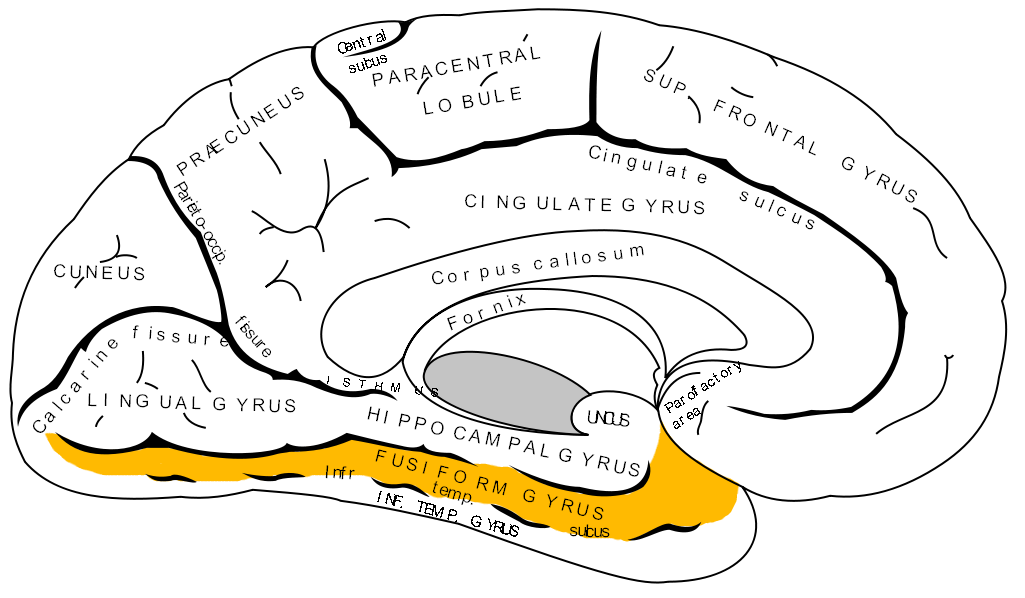 Face blindness, or prosopagnosia, is a condition in which
people cannot distinguish faces. This highly specific disorder (sufferers have
normal vision in all other respects) is thought to be the result of injury or
inherited defect in the part of the brain called the fusiform gyrus (shown left). More
precisely, the nerve clusters known as pFus and mFus within the fusiform gyrus have
been implicated in face blindness. Thanks to the work of Josef Parvizi and his
colleagues at Stanford University, and the cheerful participation of epileptic
patient Ron Blackwell, we can now confirm this hypothesis.
Face blindness, or prosopagnosia, is a condition in which
people cannot distinguish faces. This highly specific disorder (sufferers have
normal vision in all other respects) is thought to be the result of injury or
inherited defect in the part of the brain called the fusiform gyrus (shown left). More
precisely, the nerve clusters known as pFus and mFus within the fusiform gyrus have
been implicated in face blindness. Thanks to the work of Josef Parvizi and his
colleagues at Stanford University, and the cheerful participation of epileptic
patient Ron Blackwell, we can now confirm this hypothesis.
One treatment for seizure disorders like epilepsy is to
pinpoint and excise the exact nerve cluster within the brain that is triggering
the seizures. This usually requires a week long stay in the hospital with
electrodes positioned near the seizures’ likely focal point. In Blackwell’s
case, the likely spot happened to be his fusiform gyrus. In particular, two of
the electrodes were positioned to stimulate the pFus and mFus sites within that
structure.
When the doctors stimulated those two sites, Blackwell
instantly saw a distorted version of the faces in front of him. This happened
only when those specific electrodes were triggered, not when nearby ones were
turned on or when none were on. Even more intriguingly, the distortions only
affected faces. Clothing and objects were unaffected.
You can watch this experiment below.
Clearly,
the pFus and mFus nerve clusters within the fusiform gyrus are critical for
facial recognition. This information may one day help people suffering from prosopagnosia.
No comments:
Post a Comment